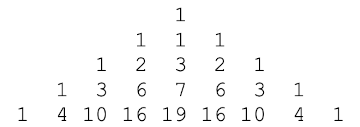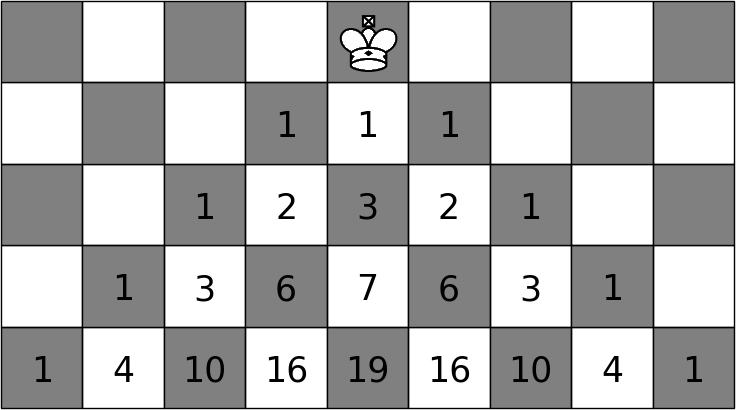The term trinomial coefficient is used a couple different ways. The most natural use of the term is a generalization of bionomial coefficients to three variables, i.e. numbers of the form
where i + j + k = n. These numbers are the coefficients of yj zk in the expansion of (x + y + z)n.
But there’s another use of the term trinomial coefficient, the one that we are interest in for this post, and that is the coefficients of xk in the expansion of (1 + x + 1/x)n. These numbers can be visualized in a triangle analogous to Pascal’s triangle.
In Pascal’s triangle, each entry is the sum of the two entries above it. In the trinomial triangle, each entry is the sum of the three entries above it.

If you’ve been reading this blog regularly you know I’ve been interested in chess puzzles lately. The thing that make me interested in trinomial coefficients is that they relate to moves of a king on a chessboard.
If you note the number paths a king can take to a square using the minimal number of moves, you get the trinomial triangle. The reason is simple: the number of ways to get to a square equals the number of ways to get there via the square up and to the left, plus the number of ways to get their via the square above, plus the number of ways to get their via the square up and to the right.

Related posts
The post Trinomial Coefficients and Kings first appeared on John D. Cook.